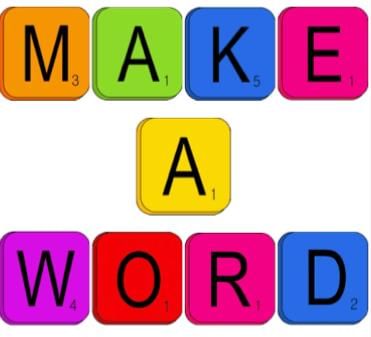Practice Questions: Making a Word | English Olympiad Class 1 PDF Download
| Table of contents |

|
| Part A: Forming Words from Given Letters |

|
| Part B: Changing One Letter |

|
| Part C: Adding a Letter |

|
| Part D: Removing a Letter |

|
| Part E: Word Families |

|

Part A: Forming Words from Given Letters
Q1. Arrange the letters: T, A, C
Ans: CAT
Explanation: When letters are arranged correctly, they form the word “CAT.”
Q2. Arrange the letters: E, G, T
Ans: GET
Explanation: The correct order is DOG, which is an animal.
Q3. Arrange the letters: A, R, T
Ans: RAT
Explanation: These letters form the word RAT, a small animal.
Q4. Arrange the letters: B, O, Y
Ans: BOY
Explanation: The letters make the word BOY, meaning a male child.
Q5. Arrange the letters: N, E, T
Ans: NET
Explanation: Correct arrangement is NET, used for catching fish.
Part B: Changing One Letter
Q6. Change one letter in “CAT” to make a new word.
Ans: BAT / HAT / MAT
Explanation: Replacing “C” with B, H, or M makes new words.
Q7. Change one letter in “PIN” to make a new word.
Ans: PAN / FIN / WIN
Explanation: Replacing “I” or “P” creates other words.
Q8. Change one letter in “HOT” to make a new word.
Ans: COT / DOT / POT
Explanation: Changing “H” gives new correct words.
Q9. Change one letter in “SUN” to make a new word.
Ans: FUN / RUN / GUN
Explanation: Changing “S” gives words with the same ending sound.
Q10. Change one letter in “PEN” to make a new word.
Ans: TEN / MEN / DEN
Explanation: Replacing “P” makes other meaningful words.
Part C: Adding a Letter
Q11. Add one letter to “AT” to make a new word.
Ans: BAT / CAT / MAT
Explanation: Adding one letter in front makes a bigger word.
Q12. Add one letter to “IN” to make a new word.
Ans: PIN / WIN / TIN
Explanation: Adding one letter before “IN” gives new words.
Q13. Add one letter to “ON” to make a new word.
Ans: SON / TON / WON
Explanation: Adding one letter before “ON” forms meaningful words.
Q14. Add one letter to “UP” to make a new word.
Ans: CUP / SUP
Explanation: Adding C or S creates a correct word.
Q15. Add one letter to “IT” to make a new word.
Ans: SIT / LIT / HIT
Explanation: Adding one letter in front of “IT” makes new words.
Part D: Removing a Letter
Q16. Remove one letter from “STOP” to make a smaller word.
Ans: TOP / SOP
Explanation: Removing S or T leaves a shorter word.
Q17. Remove one letter from “HAND” to make a smaller word.
Ans: AND
Explanation: Removing H gives AND, a meaningful word.
Q18. Remove one letter from “STAR” to make a smaller word.
Ans: TAR / RAT
Explanation: Removing S or S+T gives smaller words.
Q19. Remove one letter from “MILK” to make a smaller word.
Ans: ILK
Explanation: Removing M gives ILK, which is a valid word.
Q20. Remove one letter from “SAND” to make a smaller word.
Ans: AND
Explanation: Removing S gives AND, a correct word.
Part E: Word Families
Q21. Which of these belongs to the “-at” family?
Ans: Cat
Explanation: Words ending with “-at” are part of the “-at” family.
Q22. Which of these belongs to the “-in” family?
Ans: Pin
Explanation: Words ending with “-in” belong to the “-in” family.
Q23. Which of these belongs to the “-og” family?
Ans: Log
Explanation: Words ending with “-og” are from the “-og” family.
Q24. Which of these belongs to the “-et” family?
Ans: Net
Explanation: Words ending with “-et” belong to the “-et” family.
Q25. Which of these belongs to the “-un” family?
Ans: Sun
Explanation: Words ending with “-un” belong to the “-un” family.
|
29 videos|97 docs|63 tests
|
FAQs on Practice Questions: Making a Word - English Olympiad Class 1
| 1. What is the significance of word formation in language learning? |  |
| 2. How can changing one letter in a word alter its meaning? |  |
| 3. What are some common methods of adding letters to form new words? |  |
| 4. Why is it important to learn about word families? |  |
| 5. How does removing a letter from a word change its form and usage? |  |















